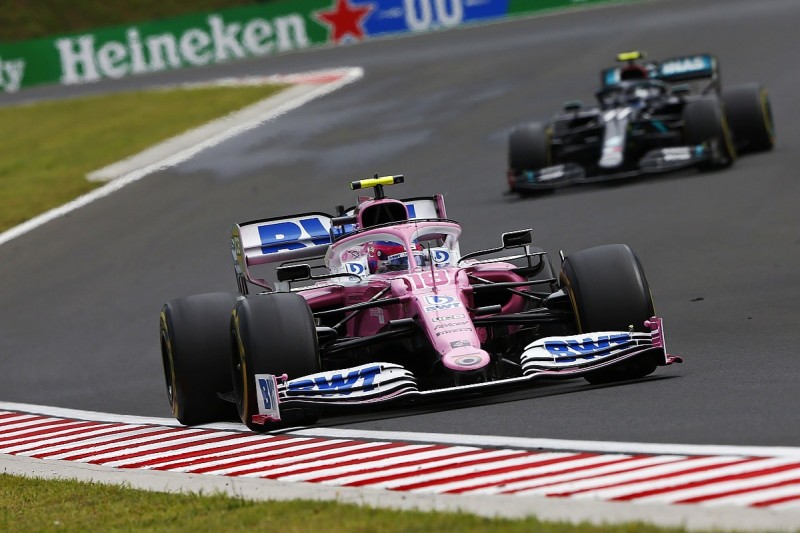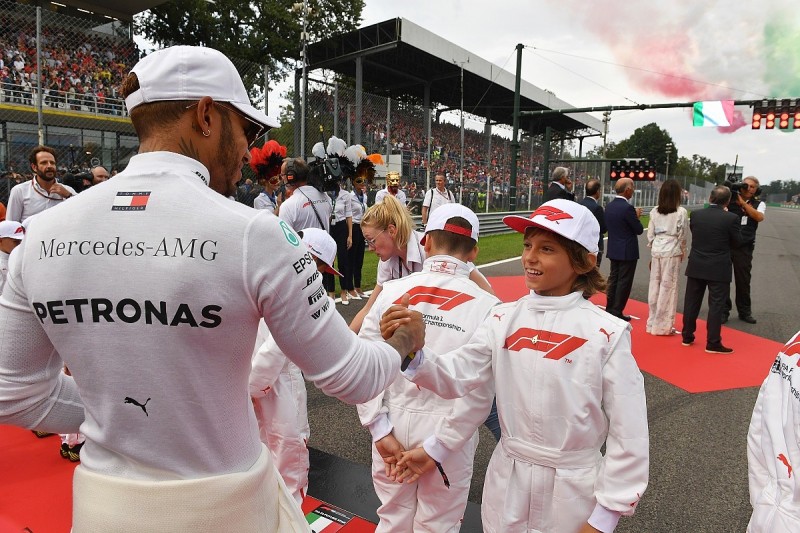Who should decide on the future of F1?
The COVID-19 crisis has given societies and industries around the world a powerful shock and motorsport has certainly not been immune

Thought leadership series
Thought leadership series
If we look back at how F1 reacted, it got on the front foot early, taking unprecedented measures to protect the teams; agreeing a sensible budget cap, delaying costly new rules and retaining the same car for two seasons. And the FIA's Return to Motor Sport guidelines have given the wider sport a framework and protocols to be able to restart safely, despite the pandemic still continuing. Week by week more race series are getting back on track.
But where do they go from here? What are the right decisions to be made about the future, to ensure a healthy sport and greater resilience when the next crisis comes along?
Early in this #ThinkingForward series, Formula E founder and chairman Alejandro Agag observed that the reason the world had been so badly caught out by the coronavirus was the lack of proper long term planning. He was thinking forward, particularly about how the world needs now to address the next looming crisis, climate change and plan properly for a low carbon future.
But how do you go about such long-term planning when it comes to motorsport and what are the tools for doing that?
For the latest #ThinkingForward discussion we spoke to Rodi Basso, former MD of McLaren Applied Technologies who led the team that made the game changing Formula E battery that lasts a whole race, and Nick Turner of Stratforma, whose background is in Wall Street and Silicon Valley and who works with Imperial College and INSEAD on strategic advisory programmes.
"After today's crisis it's important to understand what are the variables impacting your environment, your industry; it is the time for strategic thinking," Basso said.

The tool for this is scenario planning, which enables people to think about uncertainty and gain confidence in terms of making the right decisions; navigating through the fog, in other words.
"The future is too uncertain to predict on a regular reliable basis. So you have to accept the fact you can't do that and think about multiple, plausible futures in terms how they will unfold," Turner said. "And the second thing is accepting that being roughly right is better than being exactly wrong.
"Scenario planning enables you to have a different kind of conversation with your colleagues that moves away from 'I know' and 'I believe', and 'I predict' and gets into a much more open set of conversations. The challenge is to look at the horizon beyond the horizon."
With F1, for example, a scenario planner might look at two uncertainties and plot them together on a chart with governance and participation on one axis and audience engagement on other, with positive scenarios at one end and negative at the other. This would then give four quadrants.
In one you would have, for example, a very positive scenario; everyone is aligned, a good balance of power between F1, FIA and teams, a shared vision of the future and the public highly engaged, watching exciting racing on creative new channels and technologies, and the sport looking relevant and 'cutting edge' as the world goes greener.
This creates a forward-looking scenario where the stakeholders can make the right decisions and have confidence to shape the rules and invest in the next tech platforms that are going to lead to positive outcomes in audience and sponsor growth.
A more negative scenario would see the stakeholders divided and acting in their own interests, priorities not aligned and teams struggling for survival. The sport would be seen as becoming less relevant and the audience loses interest due to poor format ideas, lack of access to watch races and manufacturers withdraw, as we have seen in DTM.

It is possible to envisage scenarios like manufacturers having ever closer ties with customer teams, as we are seeing today with Mercedes and Racing Point, or the idea that former Ferrari chairman Luca di Montezemolo was always pushing for; to jettison the small independent teams and manufacturers run three cars instead of two.
"If the struggle in getting the smaller team to survive will persist, maybe one solution could be to have less players, so the manufacturers, like Ferrari, or Mercedes may be running more cars," Basso said. "But then again, this is a model that we have seen in in DTM and long term hasn't paid off."
These are critical decisions and with the veneer of complacency well and truly removed from the sport after the shock of 2020 and the pandemic. This is the time for clear strategic long term planning about what the sport needs to be.
And it's also a time to recognise that motorsport is a highly fragmented world, with far too many series operating individually and stretching budgets and audience attention. That diversity is a strength in one sense; those fans who prefer rallying fans or touring car or endurance racing to F1, are able to get what they want. But it's vital to winnow the series down to a sustainable and diverse offering and for them all to act with a single view of the future, rather than operate in their own walled gardens.
"It will be beneficial to see how Formula E and Formula 1 compete more and more because they are converging now in terms of budget and that also means converging in terms of the technology story and technology content," Basso said, adding that it is crucial the respective series use the technology for setting an example, while not falling into the trap of making technology the main story, and at the same time trying to attract the audience and improve access to the sport for participants from wider backgrounds.
The question of wider access to the sport for fans and participants and greater diversity is very relevant at the moment with Lewis Hamilton recently committing to generate more open access for people of black and minority ethnic backgrounds.
But according to Turner, diversity is also critical when it comes to who's in the room for the long term planning process and not just racial diversity.

"There are broadly three groups of people who should be involved, " he says. "One are your main stakeholders for whom the outcome really matters. Then your so-called "knowledge holders", people have genuine expertise in the topic you're discussing. And thirdly is what we call the "creative and the curious".
"And these are people who typically see the world in a different way. They may be younger, they may come from outside the organisation, people who have a clear perspective in terms of how the world unfolds, because it's really important to take that outside-in perspective to understand the environment within which you are having to operate.
"I think one of the challenges for F1 in particular is it is dominated largely by white men. And so you're not getting diversity, which I know right now is a hot topic. But it isn't just racial diversity. It's also cognitive diversity. So it's people who think in very different ways."
F1 can be rightly proud of the work it did to steady the ship early in the crisis, responding to FIA president Jean Todt's call for a "New Deal" in motorsport in the first #ThinkingForward interview of this series in early April.
But there is a lot of long term planning that now needs to take place to ensure that the sport is in robust shape ten years from now in the face of challenges from climate change, the competition between F1 and Formula E for the attention of manufacturers and brands, access for viewers with TV behind a paywall and a host of other considerations.
Watch the video for the full discussion with Rodi Basso and Nick Turner on long term scenario planning.
Be part of the Autosport community
Join the conversationShare Or Save This Story
Subscribe and access Autosport.com with your ad-blocker.
From Formula 1 to MotoGP we report straight from the paddock because we love our sport, just like you. In order to keep delivering our expert journalism, our website uses advertising. Still, we want to give you the opportunity to enjoy an ad-free and tracker-free website and to continue using your adblocker.















Top Comments